Tracing the Evolution of Hospital-based Virtual Care
 When was telehealth invented, and how quickly is it becoming commonplace even in hospital settings?
When was telehealth invented, and how quickly is it becoming commonplace even in hospital settings?
November 20, 2025
Telehealth is often associated with video visits between patients and physicians at home, but its history and greatest impact lie right inside hospital walls. And although it may feel like a modern innovation, its roots go back nearly a century.
From early experiments in transmitting medical data to today’s integrated tele-critical care services, telehealth has consistently evolved to support clinicians where they work. However, one thing has remained constant throughout all those years: telehealth’s ability to strengthen healthcare teams, not replace them.
In this blog, we’ll explore the early foundations of telehealth, its expansion into hospital settings and how it continues to shape critical care today.
Predicting Telehealth
The earliest ideas for telehealth emerged in the early 1920s, when physicians used radio communications, thanks to Luxembourgish American editor Hugo Gernsback, a pioneer in both radio and publishing. In 1925, Gernsback wrote an article in his science fiction magazine called Science and Invention in which he predicted telemedicine through a device called the “Teledactyl.”
The Teledactyl would allow doctors to not only see patients through a screen but also touch them from miles away using robotic arms. It was imagined as a sensory feedback device that was sensitive to sound and heat, which helped with diagnosis, and it also felt resistance from patients. While his idea had an odd and futuristic vision, his prediction was not entirely absurd due to the rapidly changing communications landscape of the 1920s. He even predicted a device similar to what we would now consider virtual reality goggles.
Expansion in Hospital Settings
One of the earliest and most notable examples of hospital-based telemedicine took place in the late 1950s and early 1960s when the Nebraska Psychiatric Institute connected with the rural Norfolk State Hospital (NPI) (112 miles away) through a closed-circuit television system, developed with the Bell Telephone Company, to conduct psychiatric consultations and educate medical students. The innovation was first proposed in 1955 by Cecil Wittson, M.D., who at the time was head of the former NPI, which existed from 1948 to 1985. Dr. Wittson secured the telehealth system through rounds of testing with grant support he received in 1963.
Dr. Wittson was chair of psychiatry, College of Medicine dean and the first chancellor of the University of Nebraska Medical Center (UNMC). A close associate of his was Reba Benschoter, Ph.D. and together they’re described as “true visionaries and pioneers in the field of telemedicine.”
Telehealth’s influence also made its way to other interested parties apart from hospitals. By the 1970s and 1980s, organizations such as NASA and the military began to monitor astronauts and soldiers in remote environments, proving the value of telehealth in high-acuity and resource limited settings.
In recent decades, telehealth has served to connect rural clinics and hospitals with a variety of specialists who would otherwise be out of reach for their patients. In some of the latest data, studies show that before the 2020 COVID-19 pandemic (which encouraged many hospitals to use telehealth services) 75% of rural hospitals had adopted telehealth to connect patients with urban specialists, ensuring access to advanced care despite being hundreds of miles away.
Telehealth ultimately reduces long-term costs for rural hospitals by minimizing unnecessary emergency room (ER) visits and patient transfers, saving patients both travel time and money.
The COVID-19 Catalyst
Prior to the COVID-19 pandemic, the use of telehealth services among physicians was modest, at around 15.4% in 2019. Once the pandemic hit, that number skyrocketed to 86.5% in 2021, reasonably so, as the need for social distancing was crucial to avoid infection. Telehealth provided a lifeline, allowing clinicians to collaborate across departments and facilities without unnecessary physical contact.
In a 2018-2022 survey from the American Hospital Association, the percentage of U.S. hospitals using telehealth services grew from 72.6% to 86.9%. A 2025 report from Grand View Research suggests that the telehealth market is project to grow from 123.26 billion in 2024 to 455.27 billion by 2030.
The pandemic underscored what decades of history had already proven: telehealth is not a temporary fix. It’s a resilient and adaptable model that strengthens healthcare teams and ensures patients receive the right care at the right time.
Telehealth Today
As technology continues to advance, telehealth has become a norm in many hospitals. With doctor-to-patient telehealth now more common than ever, it’s no surprise that doctor-to-hospital telemedicine is now advancing rapidly, particularly in stroke management and in the intensive care unit (ICU).
For example, most regional hospitals don’t have an in-house neurologist to refer to for appropriate stroke care. With telehealth, a stroke expert can be contacted regardless of distance. An accurate diagnosis and treatment plan is crucial for a patient to decrease their chances of suffering another stroke. Certain therapies, such as thrombolytics, help avoid stroke-related disabilities and must be given to a patient within four and a half hours after experiencing stroke symptoms.
In the ICU, staffing shortages are common; telehealth solves that and more. Remote clinicians fill the gap where an intensivist isn’t physically present, especially nights, weekends and holidays. Certain studies suggest that tele-ICU programs are associated with lower mortality rates and shorter ICU stays. With more hands on deck, a tele-ICU program helps ensure that hospitals are following best practices while reducing burnout symptoms of on-site clinicians.
It’s clear that provider-to-provider communication has turned from a luxury to a necessity. Hospitals and health systems increasingly rely on telehealth platforms to connect clinicians with one another, whether it’s for specialty consults, ICU coverage or chiming in during rounds. This shift reflects the reality of modern healthcare:
Staffing shortages/rising burnout rates
This remains one of the most pressing issues for hospitals. The Association of American Medical Colleges projects a shortage of over 85,000 physicians by 2036.
The need for specialized expertise
Complex cases often require input from several disciplines, and telehealth allows all those voices to come together quickly.
Keeping up with the latest digital tools, including artificial intelligence.
What was once seen as a cool invention is now a trusted part of daily workflows, especially AI. Physician use of AI nearly doubled from 2023 to 2024, with more than 66% of physicians using AI last year.
Telehealth’s history demonstrates how it has dramatically evolved to meet the needs of hospitals and patients 100 years ago to ICUs and other departments today.
Become Part of History
What had once been experimental has become a practical solution for improving healthcare access around the world. Telehealth as a strategic tool has been proven to help administrators address staffing challenges, improve documentation and strengthen compliance with regulatory standards, just to name a few.
From the “Teledactyl” imagined in the 1920s to the telehealth services we thrive on today, telehealth has always been about connecting clinicians and improving hospital workflows.
Intercept Telehealth is proud to be part of its ongoing story. By delivering 24/7 hospital-based telehealth services across ICUs and specialties including virtual nursing, virtual sitting, tele-neurology/stroke and tele-sepsis, we are helping hospitals everywhere embrace the future of medicine and technology. If you’re ready to join us and become part of an ever-growing network of clinicians adding telehealth to their list of services, contact us today!


